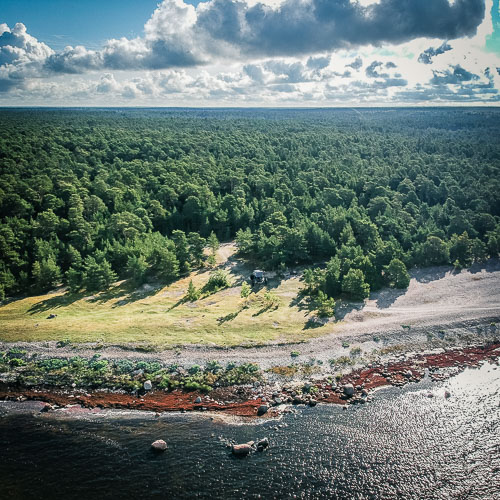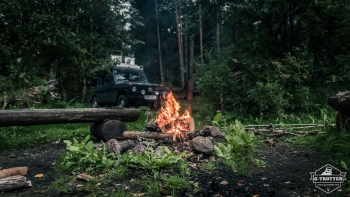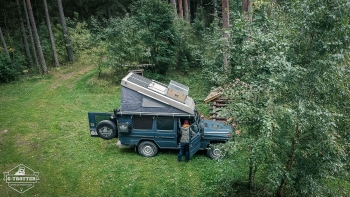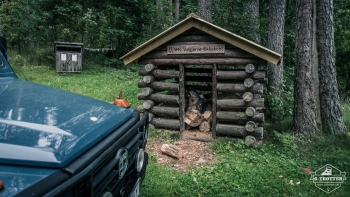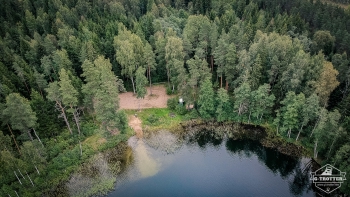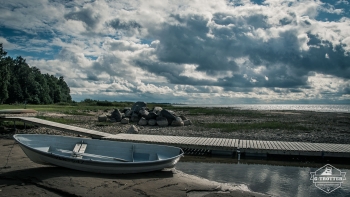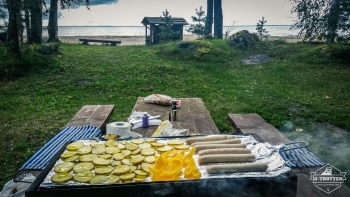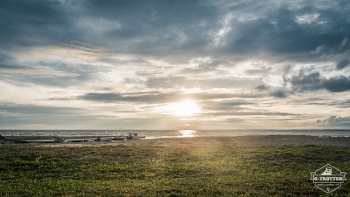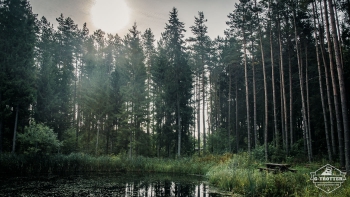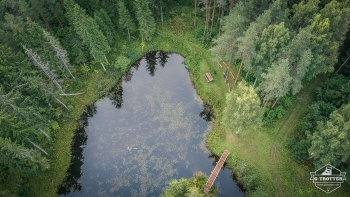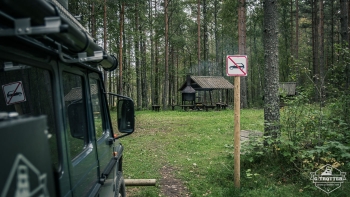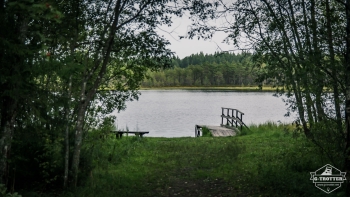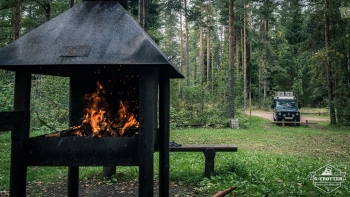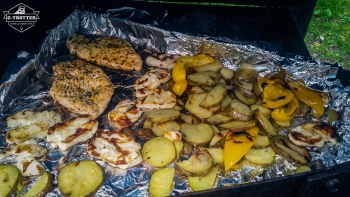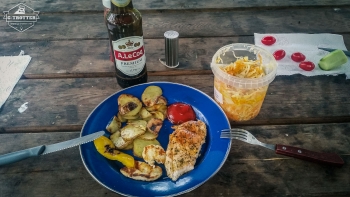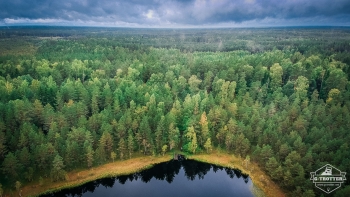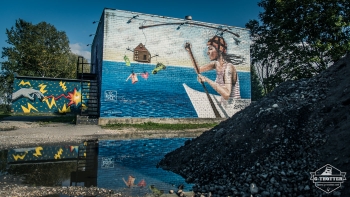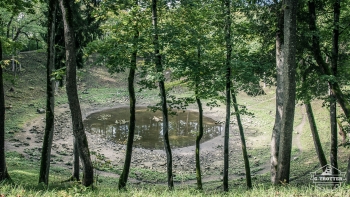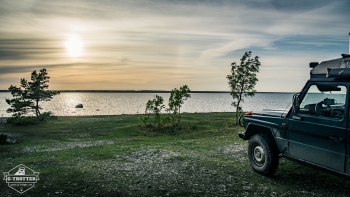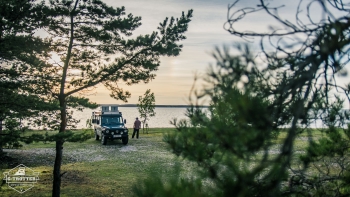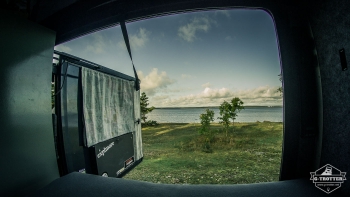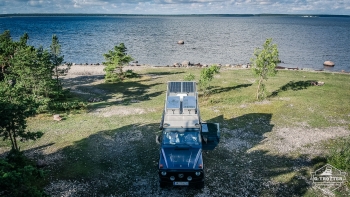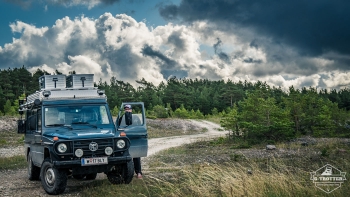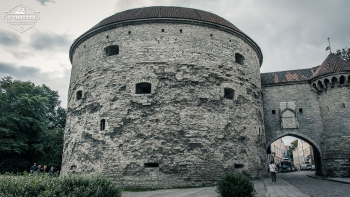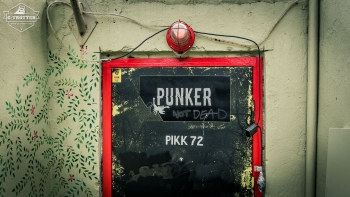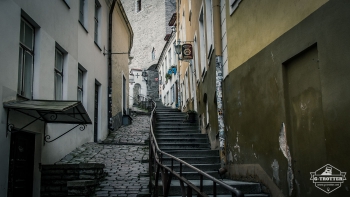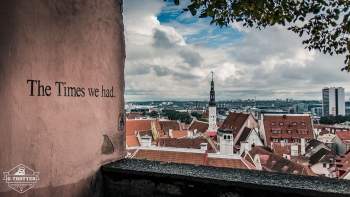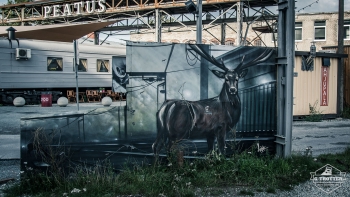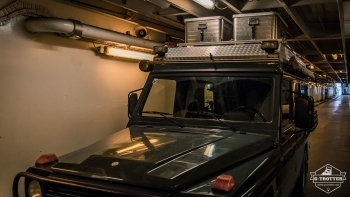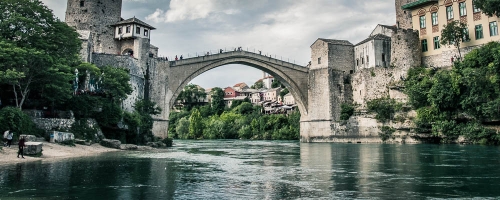
Crisscross through Estonia
Written by am on 12.02.2018 at 18:05.
Estonia is one of the most sparsely populated and densely wooded countries in Europe. Free access to the forests and its use as a recreational area is a national good - the so-called "everyman's right" applies, of which we also made use.
On the border of Latvia and Estonia lies a small town consisting of both Latvian and Estonian parts. As we drove through Valka (Latvian)/Valga (Estonian), we almost passed the state border to Estonia without realizing it. Eventually, we were able to identify a border sign in the dawn that confirmed that we had arrived in Estonia. We were excited to visit the last of the Baltic countries on our way to the Northcape.
Spoilt for choice
Of the Baltic states, Estonia soon emerged as our favorite in terms of free camp spots in the woods. The smallest Baltic country has a remarkable dense network of hiking and nature trails along which huts or designated places for setting up a tent or to park a camper can be found.
 A free RMK camp spots with grill.
A free RMK camp spots with grill.We intensively used the website of the National Forestry Administration (RMK), where each of these spots are listed in detail. This made it easy for us to find every day a place for an overnight stay that leaves nothing to be desired - in terms of being scenic, but also in regard to their “facilities” (most possessed a fire pit with a cooking grate, as well as benches and a table; some had a privy, and at a few even dry firewood was provided). It was often the case that potential camp spots were located close to each other - then we took a look at all of them and could finally choose the for us most suitable one. A luxury you probably only have in the off season.
In fact, it only happened once that a spot we were driving to was already occupied. Once, another car joined us. However, the two passengers were more interested in jumping into the lake than to sit down with us at the bonfire and they left quickly after a short swim.
Nights at the lakes
In the south of the country we stopped at the Lake Võrtsjärv, the second largest lake in the Baltics and the largest inland lake in Estonia. From the eastern city of Tartu we drove along the better known Lake Peipus to its northern shore where we spent the night.
 Estonians lake are just too adorable to not spend a night on their bank.
Estonians lake are just too adorable to not spend a night on their bank.The border runs right through the middle of the in average only 8 meters deep Lake Peipus - the eastern half belongs to Russia, the western to Estonia. As we learned from locals, the lake warms up to 22 degrees in summer due to its shallow depth and therefore attracts besides anglers also bathers.
By mid-September, however, all of them seemed to have already left and we were able to enjoy empty country roads and quiet lake shores. From Lake Peipus which is located in the northeast of the country, we traveled then across the country to its west coast.
Land of a thousand islands
Hard to believe, but a fact: Estonia includes more than 2,000 islands, most of them in the west of the country. The majority, however, is very small and uninhabited. A car ferry took us to the island of Muhu, from there we reached the largest and most famous of Estonia´s islands, Saaremaa, via an impressive causeway.
 The Kaali Crater on the gorgeous Saaremaa Island was a disappointment.
The Kaali Crater on the gorgeous Saaremaa Island was a disappointment.Besides the windmills, the charming capital Kuressaare and the beautiful coastal scenery, we were told that the Kaali crater is a popular attraction on Saaremaa. On the way there, we speculated about the appearance of a 4000-year-old crater created by a meteor strike. How will it look like? Perhaps it is not more than a circular hole in the ground? Well, almost exact.
The Kaali Crater is a circular hole in the ground filled with water. Thus, it looks more like a (quite unspectacular) pond than a meteorite crater. We strolled through the well-maintained site and learned from the information boards that the impact of the meteorite played an important role in the mythology of the island. Nonetheless, no mystical feeling emerged when staring into the hole. Hence, and we continued our journey on the island.
The wild camp spot, we found thanks to RMK on Saaremaa, was one of the most beautiful on our entire trip. As usual, we finished off the day on the island with a campfire and couldn’t resist to joke a bit about the Kaali crater.
Rest in Tallinn
After traveling across the Baltics for over three weeks, we decided to take a small break in Tallinn. This should give us some time to reflect on and digest the impressions of the journey so far.
 Panoramic view over Estonia's capital city.
Panoramic view over Estonia's capital city.A total of five nights we stayed in the capital city, strolled through its medieval center, enjoyed eating out and sleeping long.
The Estonian and Finnish capitals separate only 85 kilometers by seaway. Hence, it was no discussion that we would also leave Tallinn with a car ferry to Helsinki. Having a premonition that with the jump over the sea the price level of food would rise, we stocked up our supply before we set off to Finland. Especially Estonian beer (“A. Le Coq”) and the delicious chocolate from the Estonian manufacturer “Kalev” we couldn´t resist.
While we drank the last beer can from this purchase back in Austria, the Estonian chocolate had a less long survival time. With this, we were definitely ready for Finnish chocolate and everything else the first Scandinavian country on our trip would have to offer.

